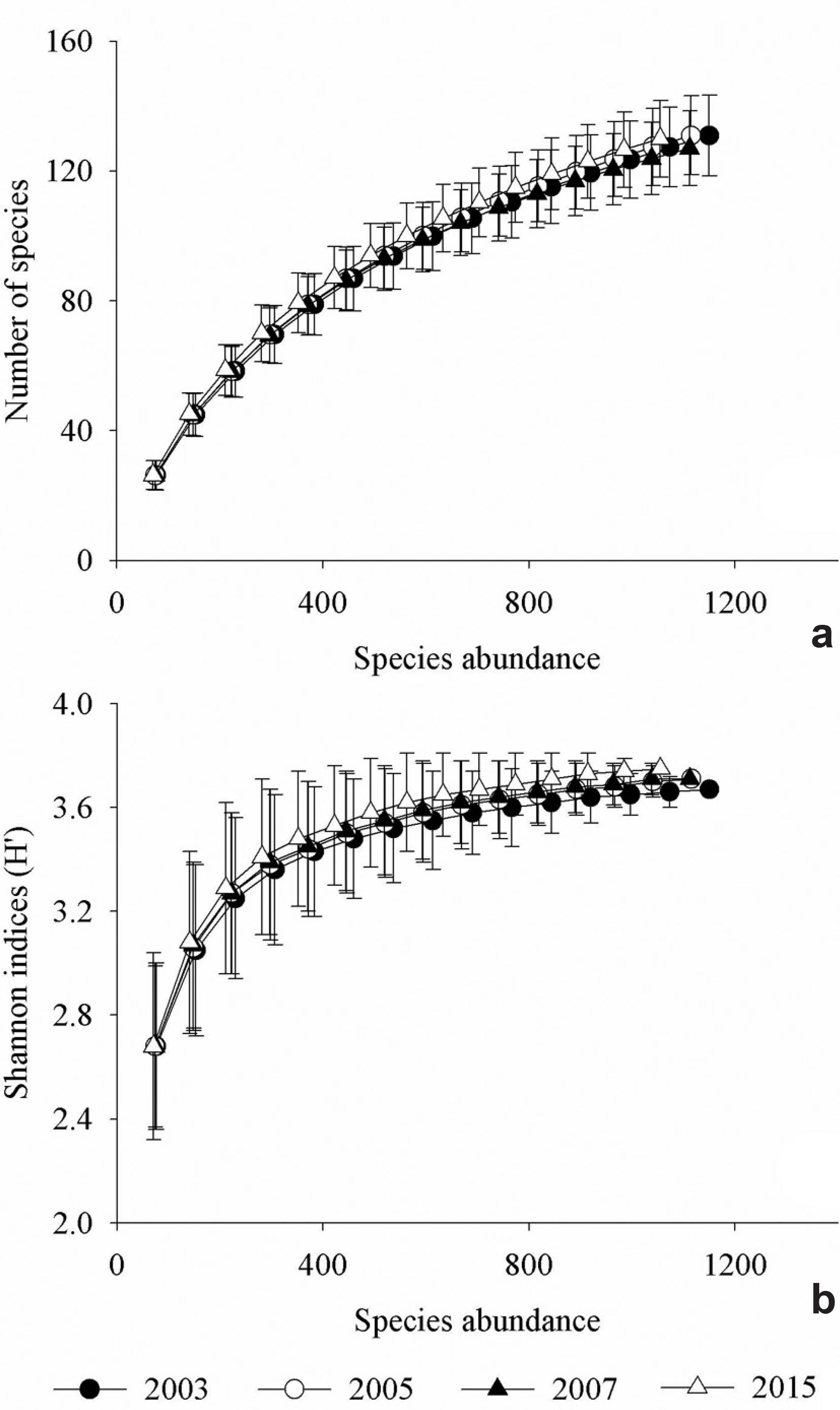Abstract
The new environmental conditions imposed by disturbance events often create a mosaic of spots in different successional stages. Our objective was to describe the temporal variation of a semideciduous seasonal forest based on its anthropic disturbance history, verifying possible changes in forest dynamics and structure. We sampled the arboreal vegetation with a diameter at breast height (1.3 m above the ground; DBH) ≥ 5 cm in 15 permanent plots of 20 × 20 m where we performed four inventories (2003, 2005, 2007 and 2015). We observed a density decrease and a basal area increase, which indicates the late successional stage of the analyzed tree community. The phytosociological structure, richness and species diversity of the tree community did not show changes throughout the monitoring. However, the Protium spruceanum predominance may be a response to the environmental changes caused by the mining occurred in the area 250 years ago. The anthropic disturbances enduring influences make this type of work indispensable because it allows the ecological processes understanding, allowing a factual management of the forests by the its effective management and conservation.
Key words:
floristic composition; forest dynamics; long-term ecological studies; phytosociological structure; tropical forest

 Source: Adapted from Google Earth, 2014.
Source: Adapted from Google Earth, 2014.


